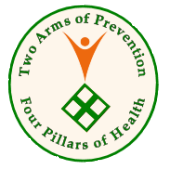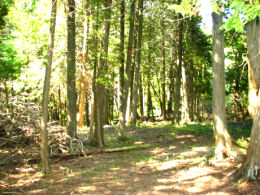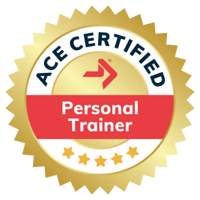Orthocellular Nutrition and Exercise Inc.
Exercise Routines
Here, we have a number of exercise routines of a general nature to get you started on the right track. There are no specific exercises here, just an overview of what's possible inside the home and in the outdoors.
There is one overriding principle that is of the utmost importance to nail down. You need to learn to spread your activities throughout the day: For example, on your calendar, you might schedule an in-home, deep breathing session at 8:00 A.M., an interval training routine in the outdoors at around 10:00 A.M., an in-home yoga and meditation session at about 2:00 P.M., and an in-home strength training workout between 4:00 and 5:00 P.M.
There are three reasons for this approach as listed below:
- This spreads your fitness activities throughout the day so they become a welcome relief from life's stressors instead of being perceived as a lengthy 2-hour chore.
- You get to work the entire body.
- You get to do both interval and strength training in the same day.
Warm-up First!
As a general rule, it is always best to do a 10-to-15 minute warm-up session before working any muscle groups. Simulate the activity you are about to perform but in a slow, steady pace, or through a number of floor exercises.
This gets the blood flowing to the muscle groups you are about to engage and lets your body know that you are getting ready for more intense exercise activity.
Interval Training Routine
Be sure to include an aerobics-based, interval training session as one of your exercise routines. It has now been established that a 12-to-15 minute interval training session in which you work your heart and lungs at a higher intensity is much better for:
increasing heart muscle size and strength,
enhancing lung capacity and power, and
maintaining or losing weight,
versus a conventional 60-minute, or longer, medium-intensity, aerobic workout.
You can do an aerobic-style, interval training session at a higher intensity while in the home:
using a stationary bike,
while skipping rope, and
even by running-on-the-spot.
Or, you can head to the outdoors and perform one of the following activities:
- interval walking,
- striding,
- sprinting,
- interval hiking,
- interval cycling,
- interval swimming,
- interval ice skating,
- interval inline skating, or
- interval snowshoeing.
In the context of the Preventative Health Programs: During the programs adults are mainly concerned with increasing heart muscle size and strength, as well as regaining lost lung capacity and power. It is also desirable to maintain aerobic efficiency through weight-bearing activities and bone-loading exercises without high impact on the joints.
That said, high impact, long duration, aerobic-endurance activities such as long distance running and jogging are out, and long duration, medium-intensity, aerobic workouts like road cycling and treadmill walking are questionable.
If you do participate in one of these activities, it is best to keep it to a minimum, perhaps once a week at most, to add variety to your program and as a method of cross training.
Strength Training Routine
Make sure you include a strength training component as another one of your exercise routines. One way to do this is to work different muscle groups on different days of the week. The point is that sets and repetitions with free weights, resistance bands, and/or body weight need to be done slowly so you maintain the correct form and work through the complete range of motion, at all times.
Total body workouts, which include the upper body, lower body, and trunk region can take up to 1.5 to 2 hours to complete including a warm-up at the beginning and stretching time at the end. I find this time is excessive. That being said, you can't rush through your routine. So, if you split the body into the:
upper body,
lower body, and
trunk region
you can work the upper body on Mondays and Wednesdays, the lower body on Tuesdays and Thursdays, and the trunk region, which includes the hips, butt, core, and lower back, on Wednesdays and Saturdays. Each of these workouts should last about 30 to 45 minutes.
In addition, you could include the chest, upper back, and shoulders on Monday's upper body workout, and then switch and work the upper arms and forearms during the second, upper body workout on Wednesday. You can do the same for the lower body and trunk region, working different muscle groups each time. This means in six days you have strength trained your entire body once.
In the context of the Preventative Health Programs: Adults are mainly concerned with maintaining and/or increasing muscle mass with age because muscle is the biggest metabolizer in the body, so one complete rotation per week through the major muscle groups in the body should be enough. This primarily imparts muscle endurance and strength gains, as well some size increases for men, if done right.
Therefore, most adults interested in their fitness, physique, and longevity do not need to realize huge gains in muscle size, bulk, or hypertrophy, as trainers refer to it, with barbells and machines in a gym setting. That is best left for the body builders and competition weight lifters.
Flexibility Routine as part of your Cool-down
Don't forget to stretch after every exercise routine. It doesn't matter if it is a conventional aerobic activity, an interval training session, or a strength training workout, always get in the habit of stretching near the end as part of your cool-down. Build this into the closure of all of your exercise routines.
You do not need to stretch the entire body, just flex the muscle group or groups that you just got done working on.
That said, it is unwise to do static stretching before your workouts since stretching cold muscles can result in injury, unless you are one of those people who are very flexible, and who like to participate in flexibility-only sessions. These people have conditioned their bodies over time. But, this is not the norm.
Preventative Health Programs and Exercise Routines
In addition, the above exercise routines are weaved into the Preventative Health Programs. But you need to get the right equipment before you can start. If you haven't already visited the Exercise Equipment page, head over there now to find out what's needed.
Recommend this page on Facebook ...
And, be sure to check out these educational resources from ACE ...
Checkpoint
Go back to the top of the page: Exercise Routines
Go back to the room: Exercise Room
Head back home: Home
Caring is sharing ....
Four Pillars
of
Health
Pillar #1
Nutrition Protocols
Visit the Nutritionist's Kitchen
Pillar #2
Exercise Routines
Go to the Exercise Room
Pillar #3
Stress Reduction
Techniques
Head over to the Stress Reduction Place
Pillar #4
Detoxification
Methods
Check out the Detox Centre
Preventative
Health Contract Services
Business
and
Industry
Educational
Institutions
Health
Agencies
Preventative
Health Business Opportunities
Four Pillar
Licences
Two Pillar
Licences
Image Galleries
Click one of the thumbnails below to view a series of photos taken on the Bruce Trail and Georgian Bay.
E-publications
Our E-books
Workshops
Free Workshops
Fall 2025
Go to: Free Workshops
Blog
The Preventative Way
with
Mr. Prevention
On The Preventative Way page we reveal a number of scientific facts related to how we function at the cellular level to keep our bodies healthy. Visit this page often as new facts, quotes, videos, tips, and traps will be added from time to time.
Go to: The Preventative Way
Connect with Us
on Facebook
Visit the American Council on Exercise
American Council on Exercise offers four certifications for aspiring fitness professionals including their Certified Personal Trainer (ACE-CPT) designation. Click on the ACE logo to find out all about their programs and certifications..
The Leap Manifesto
A call for a Canada based on caring for the Earth and one another is the message on this organization's site.
Click on the above logo to read the manifesto and then sign it. Orthocellular supports this initiative because it is about positive change for the people and the environment that we all share. The changes need to start now!








